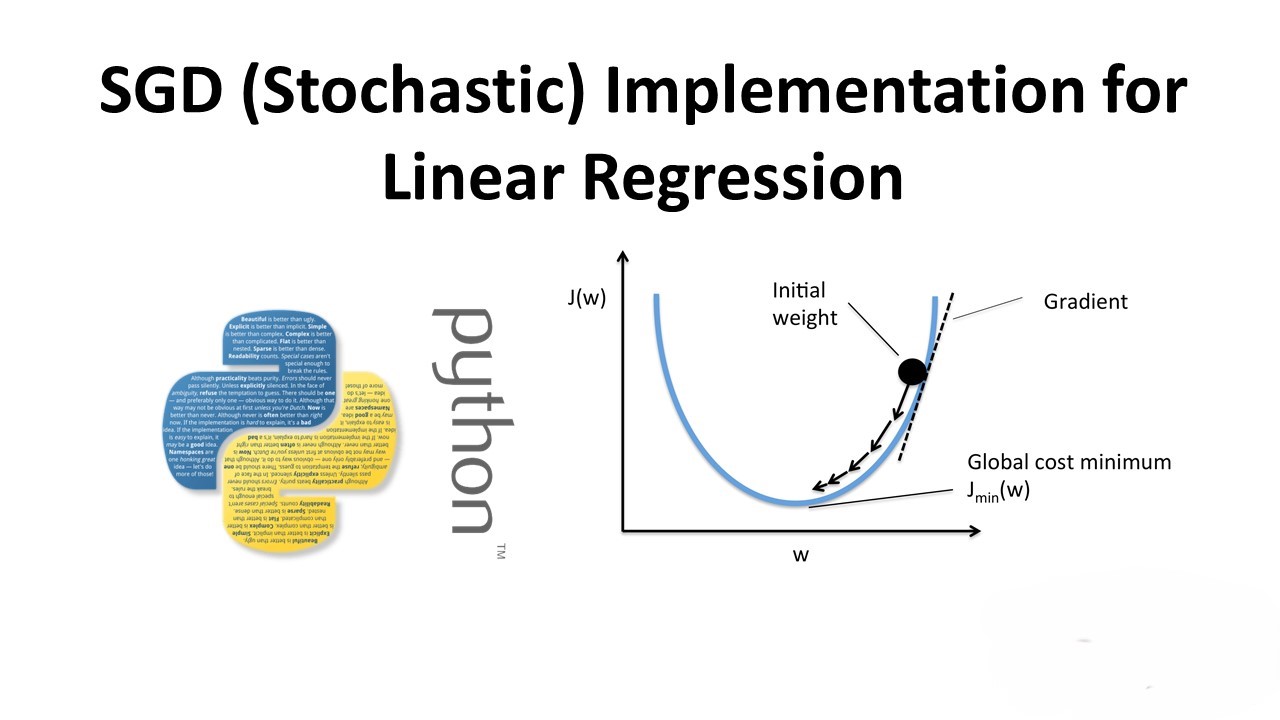In this post, we’ll explore the implementation of Stochastic Gradient Descent (SGD) for Linear Regression on the Boston House dataset. We’ll compare our custom implementation with the SGD implementation provided by the popular machine learning library, scikit-learn.
Importing Libraries
import warnings
warnings.filterwarnings("ignore")
from sklearn.datasets import load_boston
from sklearn import preprocessing
import pandas as pd
import numpy as np
import matplotlib.pyplot as plt
from prettytable import PrettyTable
from sklearn.linear_model import SGDRegressor
from sklearn.metrics import mean_squared_error
from numpy import random
from sklearn.model_selection import train_test_split
Data Loading and Preprocessing
We load the Boston House dataset, standardize the data, and split it into training and testing sets.
boston_data = pd.DataFrame(load_boston().data, columns=load_boston().feature_names)
Y = load_boston().target
X = load_boston().data
x_train, x_test, y_train, y_test = train_test_split(X, Y, test_size=0.3, random_state=123)
scaler = preprocessing.StandardScaler().fit(x_train)
x_train = scaler.transform(x_train)
x_test = scaler.transform(x_test)
SKLearn Implementation of SGD
We start by implementing SGD using scikit-learn.
model = SGDRegressor(max_iter=1000, tol=1e-3)
model.fit(x_train, y_train)
y_pred_sksgd = model.predict(x_test)
MSE for the SKLearn SGD
mse_sksgd = mean_squared_error(y_test, y_pred_sksgd)
print("MSE for SKLearn SGD:", mse_sksgd)
Obtaining Weights from SKLearn SGD
sklearn_w = model.coef_
print("Weights from SKLearn SGD:", sklearn_w)
Custom Implementation of SGD
We then implement our custom SGD for linear regression.
def MyCustomSGD(train_data, learning_rate, n_iter, k, divideby):
# Implementation code
return w, b, elist
# Setting custom parameters
w, b, elist = MyCustomSGD(train_data, learning_rate=0.01, n_iter=1000, divideby=2, k=10)
y_pred_customsgd = predict(x_test, w, b)
Plot and MSE for the Custom SGD
plt.scatter(y_test, y_pred_customsgd)
plt.grid()
plt.xlabel('Actual y')
plt.ylabel('Predicted y')
plt.title('Scatter plot from actual y and predicted y for Custom SGD')
plt.show()
mse_customsgd = mean_squared_error(y_test, y_pred_customsgd)
print("Mean Squared Error for Custom SGD:", mse_customsgd)
Obtaining Weights from Custom SGD
custom_w = w
print("Weights from Custom SGD:", custom_w)
Conclusion
We compared the performance of our custom SGD implementation with the scikit-learn SGD implementation. Our custom implementation initially performed poorly but improved significantly when we adjusted the learning rate and batch size. Overall, with proper tuning, our custom SGD approach can achieve similar performance to the scikit-learn implementation.


Leave a Reply